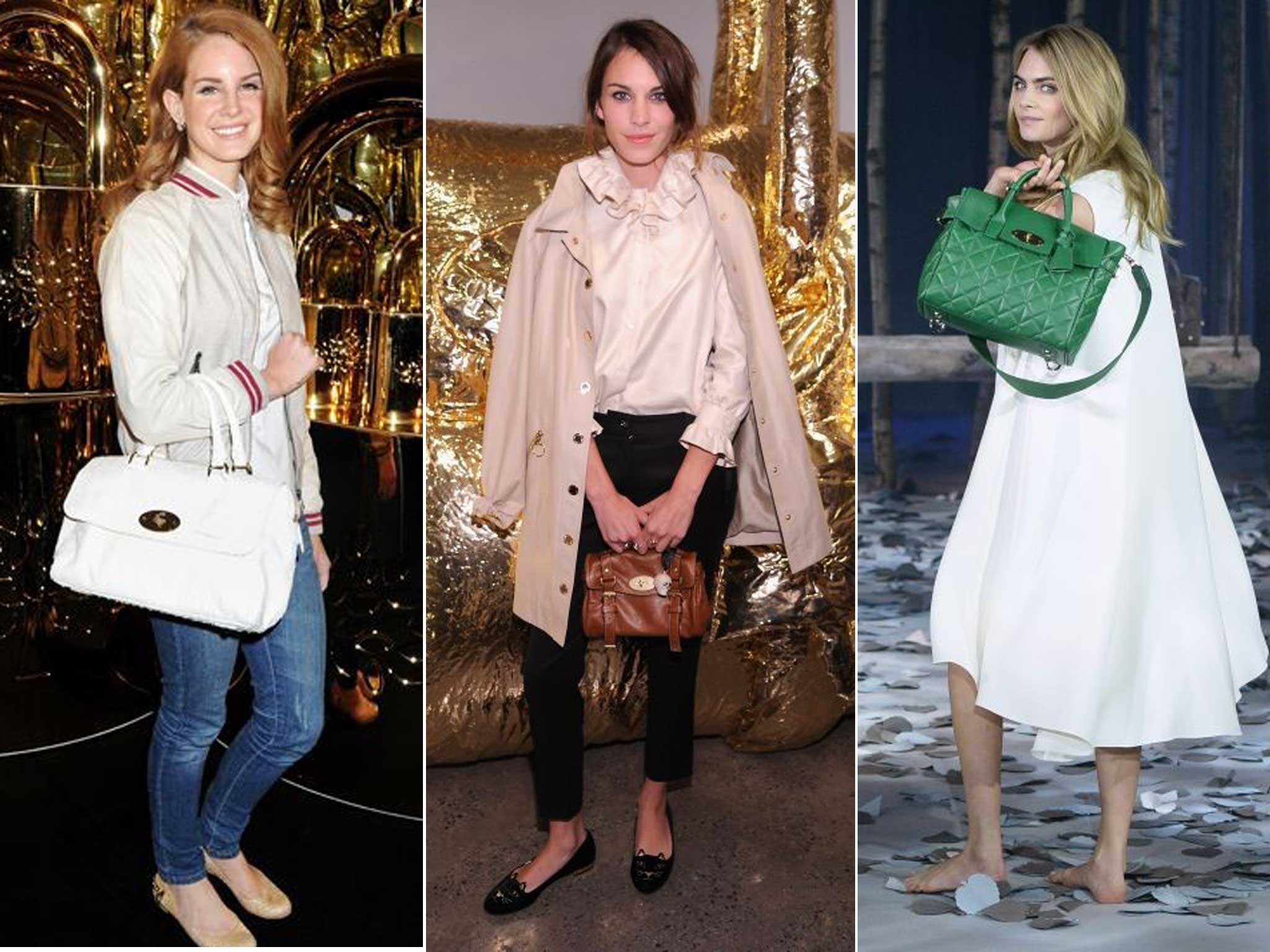Mulberry: To hell in a handbag
British label Mulberry once cornered the middle market in desirable bags. But its decision to go for the super-rich has backfired in dramatic fashion

Your support helps us to tell the story
This election is still a dead heat, according to most polls. In a fight with such wafer-thin margins, we need reporters on the ground talking to the people Trump and Harris are courting. Your support allows us to keep sending journalists to the story.
The Independent is trusted by 27 million Americans from across the entire political spectrum every month. Unlike many other quality news outlets, we choose not to lock you out of our reporting and analysis with paywalls. But quality journalism must still be paid for.
Help us keep bring these critical stories to light. Your support makes all the difference.
Accessible luxury may seem like a contradiction in terms, but it’s fashion’s current obsession. What fashion brands mean by “accessible” is “cheap”. But not too cheap. Cheaper than the lofty upper echelons, the four-figure likes of Hermès, but still expensive enough to make your wares aspirational.
It’s a market the British label Mulberry once had nailed – a market that, in the space of 12 months over 2010-11, managed to increase its value by 526 per cent to exceed £1bn. The company peaked at £1.5bn a few years ago; today, it is valued at about £400m.
That comes at the end of a rocky period when Mulberry consciously and somewhat ferociously attempted to shift its image upmarket – its former CEO, Bruno Guillon, came from luxury French leather-goods house Hermès. His appointment in 2012 was seen as a deliberate attempt to push Mulberry into the leagues of the superbrand and the hyper-rich. With Guillon’s departure in March this year, we can resolutely state that it failed. In spectacular fashion – £140m was wiped off the company’s value in December alone.
The mistake seems fundamental: despite pretensions to the contrary, Mulberry isn’t Hermès, and should never have been. It felt odd and incongruous for a brand that helped to define the idea of accessible luxury with its cheap(ish) and cheerful bags named after hip pop culture celebrities. Mulberry’s roster of best-sellers include bags named the Alexa (after Chung, television presenter and general fashion flotsam), the Del Rey (after Lana, the famous-for-15-minutes songstress) and the Cara (after the ubiquitous model and Delevingne scion). Priced in the upper three figures, the first two styles flew off shelves.
Their hyper-luxe counterparts did not, unfortunately for them.
The most confusing thing is Mulberry turning its back on the middle England middle market. That’s a tricky customer to pin down, especially in a marketplace that’s becoming crowded. Michael Kors, for one, has made something of a killing, boldly positioning his label at an accessible price point and reaping the rewards – £11bn, to be precise, the valuation of the company earlier this year. Increasingly, even high-fashion leaders, such as Louis Vuitton, offer goods at a lower “entry level” price. An embroidered leather Noe bag from Marc Jacobs’s final collection for the house retails for £2,120, but the classic Speedy handbag in signature LV monogram canvas is priced about £550. Not cheap, but definitely cheaper.
Now competitors are muscling in on Mulberry’s turf, including Michael Kors and Longchamps, the low-priced French handbag purveyor that collaborated with Mulberry muse Kate Moss on a number of lines.
The latest is Coach, an American accessible luxury behemoth which hired former Mulberry creative director Stuart Vevers to rev up its fashion offering. He showed his first collection in February to great acclaim, as Mulberry sat out the season following the departure of its former creative head Emma Hill last autumn.
Overall, the Mulberry situation is a neat indication of the fixations of fashion as a whole: a polarisation. Brands are either pitching for the “accessible luxury” market or pushing their prices into the stratosphere to bag the 1 per cent of the world’s wealthiest customers, the ones who’ll have it any colour, as long as it’s crocodile lined in mink. Mulberry, for some reason, put all its money on the fact that this 1 per cent was the market to chase. It bet wrong.
Join our commenting forum
Join thought-provoking conversations, follow other Independent readers and see their replies
Comments